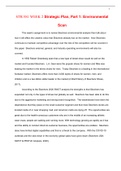Summary
Summary Introduction to Accounting, ISBN: 9780198849964 Accounting (BEA1013)
- Module
- Institution
- Book
best revision notes Summary of Introduction To Accounting for Revision Notes Accounting Summary Summary of course lectures Vrije Universiteit Amsterdam International Business Administration Accounting
[Show more]








